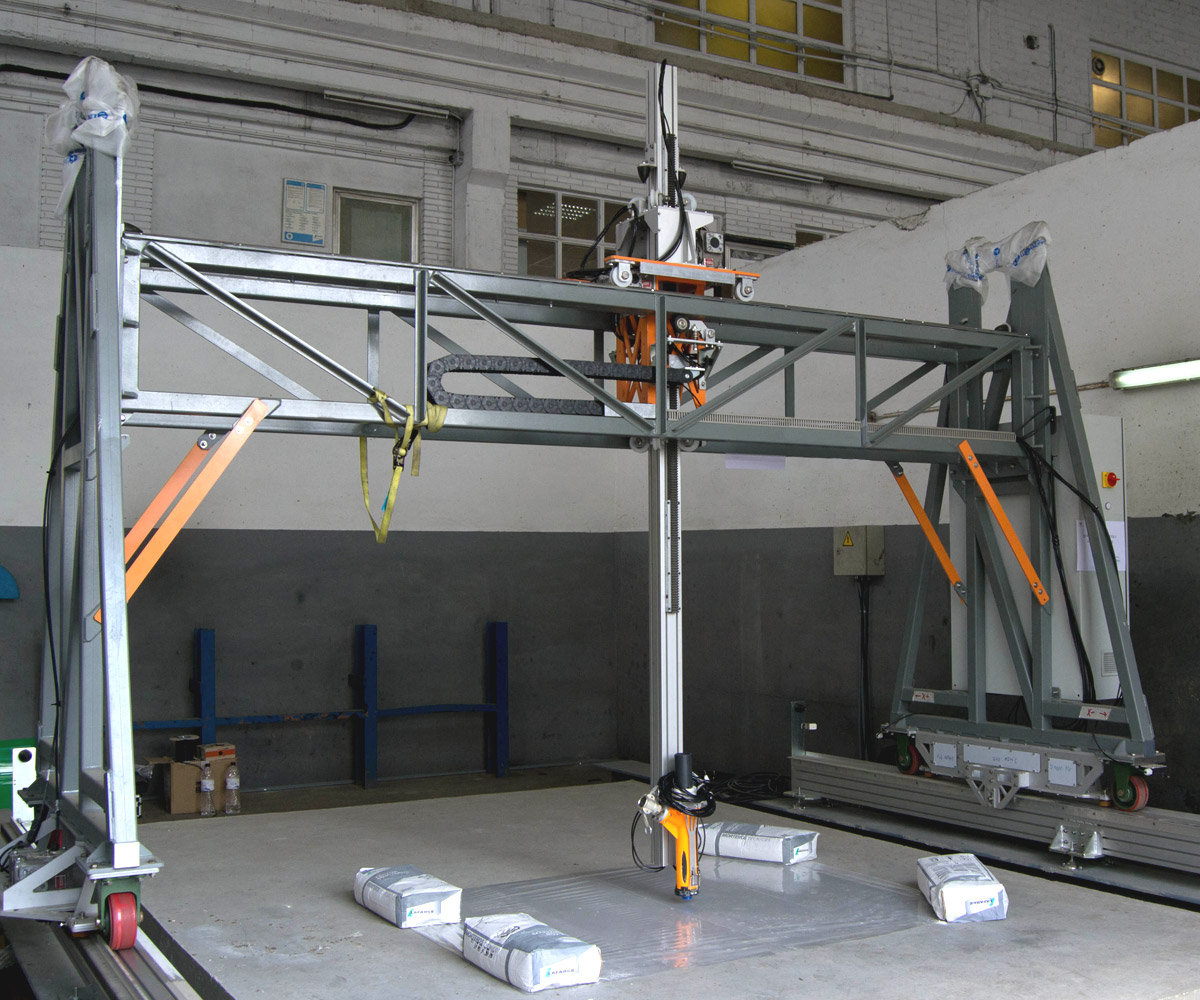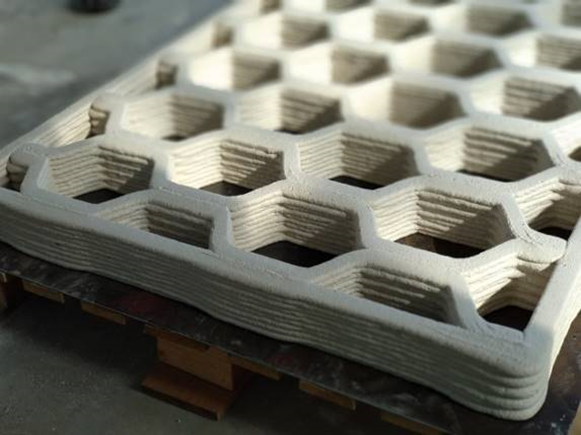3DCONS, a Spanish construction consortium, has completed a collaborative 3D printing research and development project aimed at developing innovative 3D printing systems and materials for construction.
The consortium, led by Spanish construction company VIAS Y CONSTRUCCIONES, has been working on the project for over three years, and presented the results of the project at the Institute of Construction Sciences Eduardo Torroja (IETCC) in Madrid. With the developments presented as part of the project, 3DCONS hopes it will enable the future automation of building construction, rehabilitation and thermal insulation with 3D printing.

Breaking the mold of construction with 3D printing
The Spanish national research project ‘3DCONS: New 3D Construction Processes’ is aimed at developing 3D printing systems specifically “for the rehabilitation of claddings by direct printing and manufacture of prefabricated elements “à la carte” (without molds or formwork).”
The construction research project relied on financing of over eight million euros, and was funded by the Center for Industrial Technological Development (CDTI), a public organization for technology development in Spain. The funding was part of the STRATEGIC CIEN, a program that finances large industrial research and experimental development projects with contribution from the European Regional Development Fund (ERDF).
As well as VIAS, members of the consortium include Spanish material, construction, manufacturing and software companies LafargeHolcim, Saint-Gobain Placo, GEOCISA, PROINGESA, ATANGA and CYPE.
Benjamín González, Director of Corporate Development of CYPE, stated “With the results obtained in 3DCONS, Spain will be able to maintain the ability to compete internationally and promote a national 3D printing industry considered by many as the new industrial revolution.”

Automating the construction process
Included in the 3DCONS project report presented at the IETCC, was a 3D printing system that allows the direct printing of a new facade on an existing surface, reportedly the first of its kind. Furthermore, the research project also developed a system for printing prefabricated elements without the need for molds or formwork.
The consortium also presented a range of 3D printable construction materials to be used with the systems, based on cement, lime and gypsum plaster. The materials, developed by construction material companies LafargeHolcim and Saint-Gobain Placo, enables a wide range of construction applications for the 3D printing systems, including the restoration of historical heritage sites. Carlos Ruiz, who spearheads R&D of plasters at Saint-Gobain Placo, explained that, with the project has come a shift in the use of plaster for construction, as it now possible to validate its use as a 3D printing material.
Jorge Rodríguez, head of Environmental Innovation and ICT at VIAS, also explained during the presentation of the results that the automation of construction processes could allow control over the execution times, costs and quality of the end-product. It may also enable more creative freedom , allowing companies to customize and adapt construction processes by controlling different properties of the materials like thickness and geometry.
“For the printing of building-scale facades, an industrial scale-up of the developed technology is required, [however] in the field of prefabricated [elements without moulds] there are potential applications that can be transferred in brief to the market,” explained Jorge Rodríguez.
“One of those that is already underway with a first real planned application is the printing of lost formwork for the execution of structural elements with complex geometries.”

Developing 3D printing for concrete construction
With the 3DCON project, there has been an increased input into the research and implementation of 3D printing for construction. Recently, Graz University of Technology (TU Graz) in Austria has been researching the development of 3D printed concrete parts for construction, as part of the COEBRO project. Similar to 3DCON, the project also seeks to eliminate the use of formwork in concrete construction.
Furthermore, middle eastern building materials company Al Kathiri Holding has received approval from the Saudi Arabia Ministry of Housing to develop and utilize 3D printed concrete for government-based projects.
Subscribe to the 3D Printing Industry newsletter for the latest news in additive manufacturing. You can also keep connected by following us on Twitter and liking us on Facebook.
Looking for a career in additive manufacturing? Visit 3D Printing Jobs for a selection of roles in the industry.
Featured image shows a prefabricated construction element 3D printed without molds or formwork. Image via Atanga.


